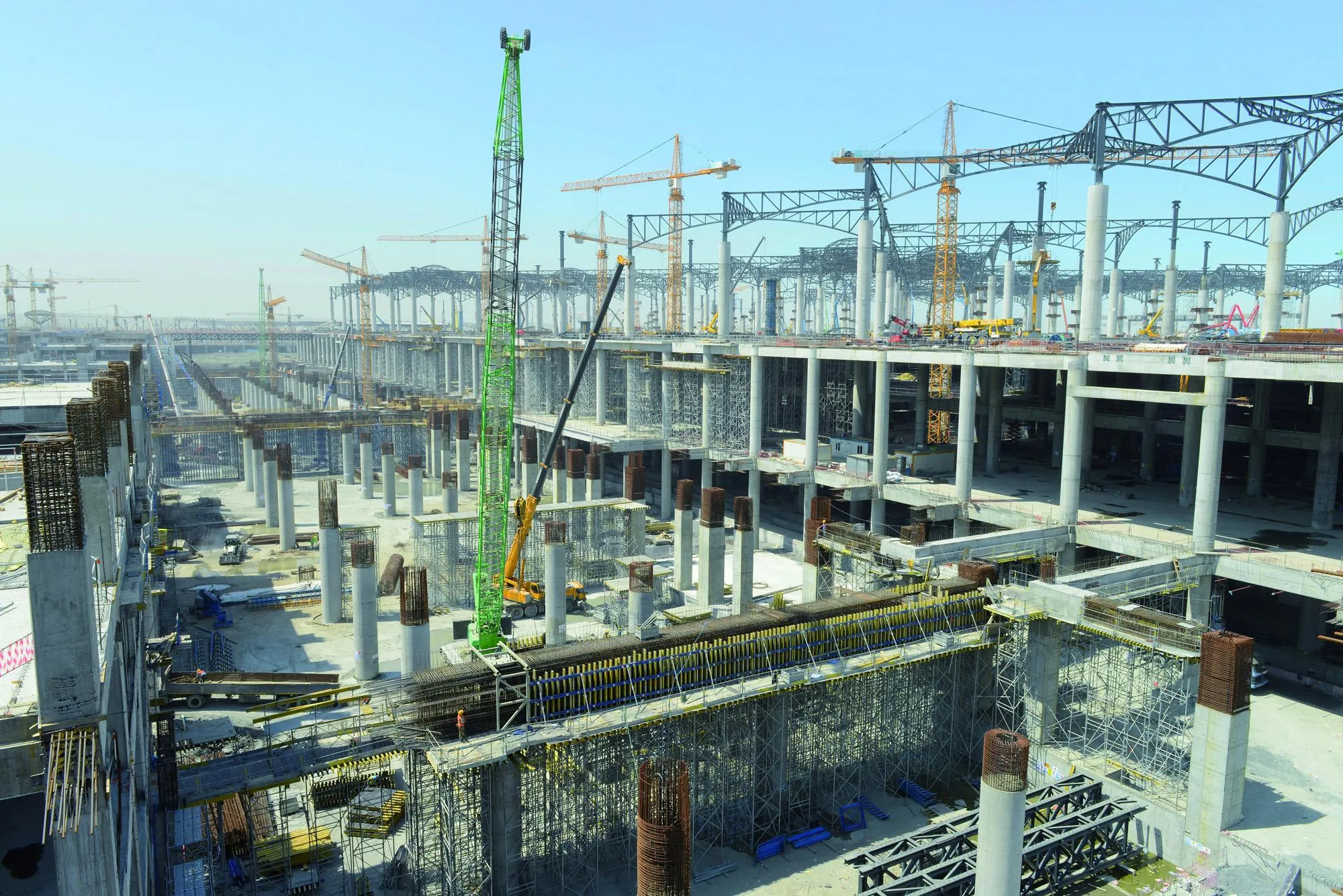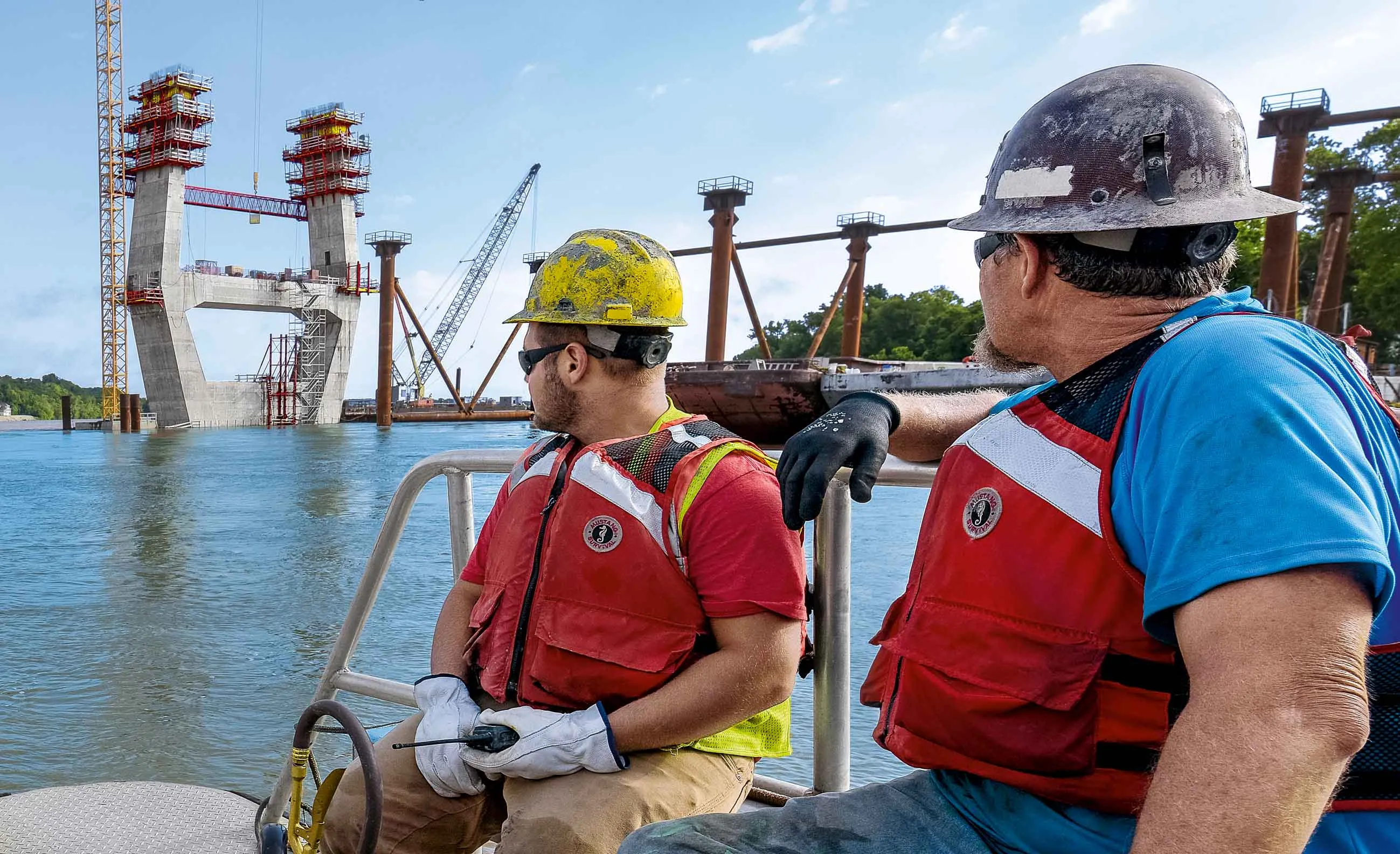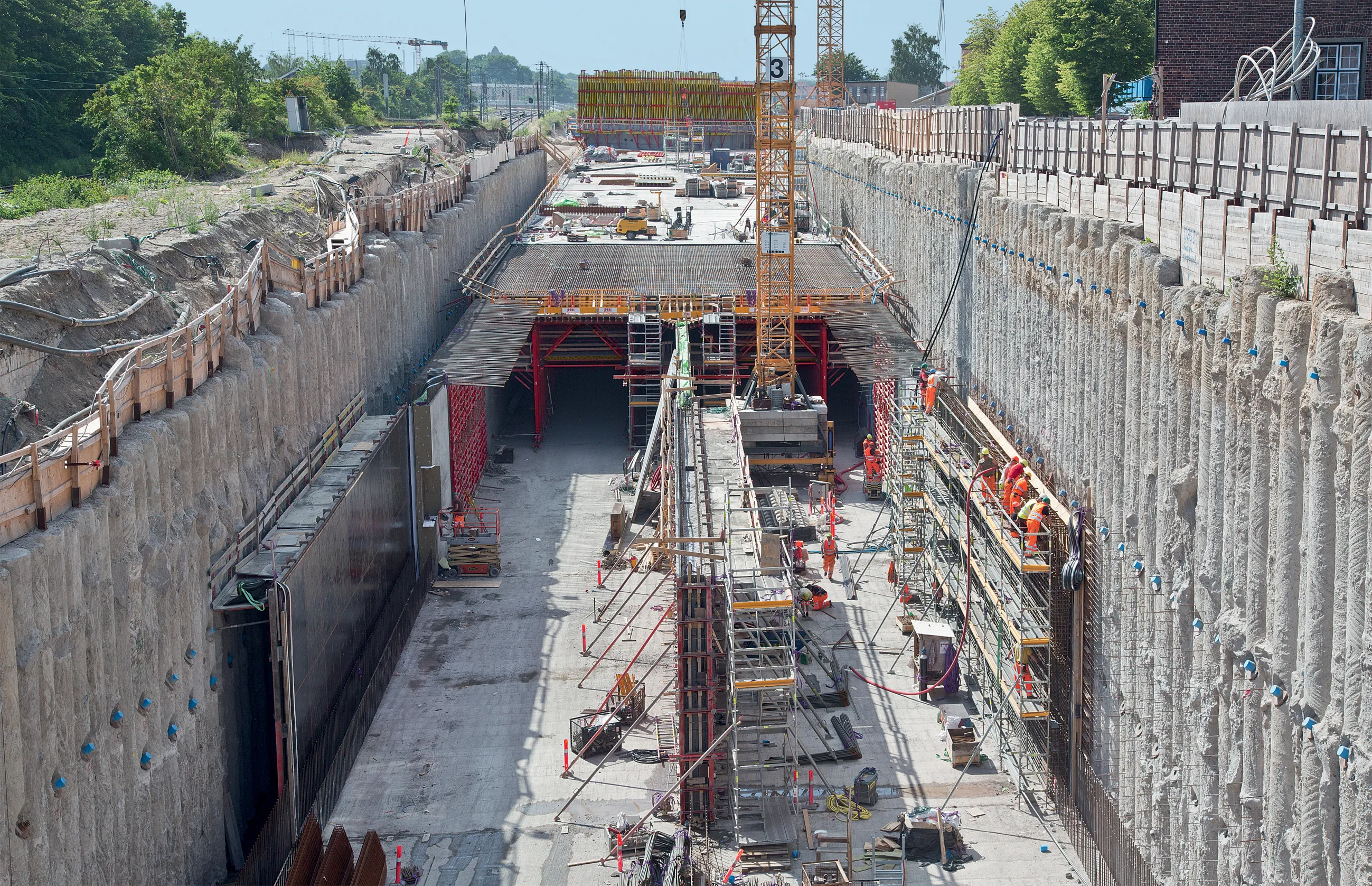
The load-bearing tower frames are steel, eminently suitable for high clearances and high loads. On the Istanbul airport build, these circumstances apply for the big downstand beams, which are 12m above ground level and on which the precast slab is laid. Because they are so strong and because of the wide frame span, moreover, the load-bearing towers are very safe. They also help speed up progress overall on the build, because vertical stacking is easy and assembly is a no-tools operation.
In all, 30,000 load-bearing tower frames and 100,000 running metres of Timber formwork beams H20 eco and H20 top are in use on this project. Large as the numbers are, they represent the optimised formwork solution on a construction project of this magnitude. Because the Doka load-bearing towers are designed for materials-saving use: the frames are oversized, so, all in all, fewer frames are needed to prop the structure.









